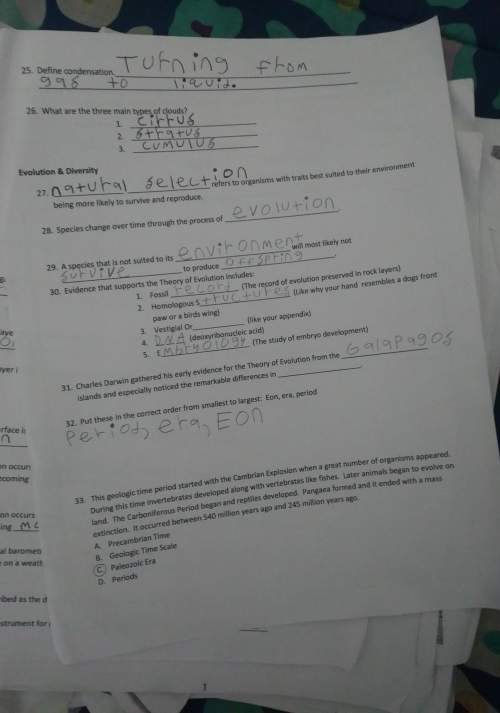
Physics, 18.03.2021 02:20 kenken2583
Three charges lie along the x-axis. One positive charge, q1 = 4.80*10^-18 C, is at x = 3.72 m, and another positive charge, q2 = 1.60*10^-19 C, is at the origin. At what point on the x-axis must a negative charge, q3, be placed so that the resultant force on it is zero?

Answers: 2


Another question on Physics

Physics, 22.06.2019 11:30
Which of the following is the phase that results when the moon is on the opposite side of the earth from the sun? a. quarter moon b. crescent moon c. new moon d. full moon
Answers: 1

Physics, 22.06.2019 19:10
3. a worker pushes a 30.5 kg polished stone along a polished table with a force on bonin a straight line for 5.20 s after starting from rest. there is no friction between thestone and the table. at the end of the table. the stone is hooked to a cable with a lengthof 62.0 cm to rotate it to a rough table to store until they can be picked up. the roughtable has a coefficient of static friction 0.702 with the polished stone. remember that 8= 9.80 m/s2a) what is the speed of the stone when it is hooked to the cable? b) what is the tension in the cable while the stone is rotating? (there is still nofriction)c) how much force is needed to make the stone begin sliding from rest on therough table? ius = 0.70262.0 cm30.5 kg20.5 kg6= 0
Answers: 2


Physics, 22.06.2019 20:00
Bahan yang digunakan mencegah terjadinya polarisasi pada batu baterai a.larutan h2so4b.mncl2 dan serbuk karbonc.pbso4d.nh4cl
Answers: 3
You know the right answer?
Three charges lie along the x-axis. One positive charge, q1 = 4.80*10^-18 C, is at x = 3.72 m, and a...
Questions

Biology, 26.06.2019 17:00

Physics, 26.06.2019 17:00

Physics, 26.06.2019 17:00

Physics, 26.06.2019 17:00

Biology, 26.06.2019 17:00

History, 26.06.2019 17:00

History, 26.06.2019 17:00

Business, 26.06.2019 17:00

Social Studies, 26.06.2019 17:00

Business, 26.06.2019 17:00

Business, 26.06.2019 17:00

Business, 26.06.2019 17:00

Biology, 26.06.2019 17:00


History, 26.06.2019 17:00

Social Studies, 26.06.2019 17:00

Business, 26.06.2019 17:00

Social Studies, 26.06.2019 17:00


Biology, 26.06.2019 17:00

 .
. and
and  would attract
would attract  .
.  is on the line segment between
is on the line segment between  and
and  .
.  , where
, where  (in other words,
(in other words,  away from
away from  denote Coulomb's constant.
denote Coulomb's constant.  .
. .
. . Equate these two expressions and solve for
. Equate these two expressions and solve for  :
: .
. .
. .
. .
. , it should be true that
, it should be true that  and
and  . Therefore,
. Therefore,  .
. .
. .
. .
. .
. .
. .
.


